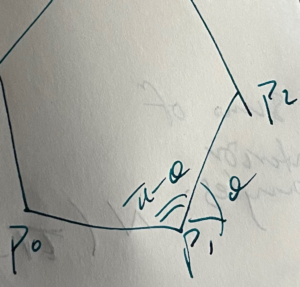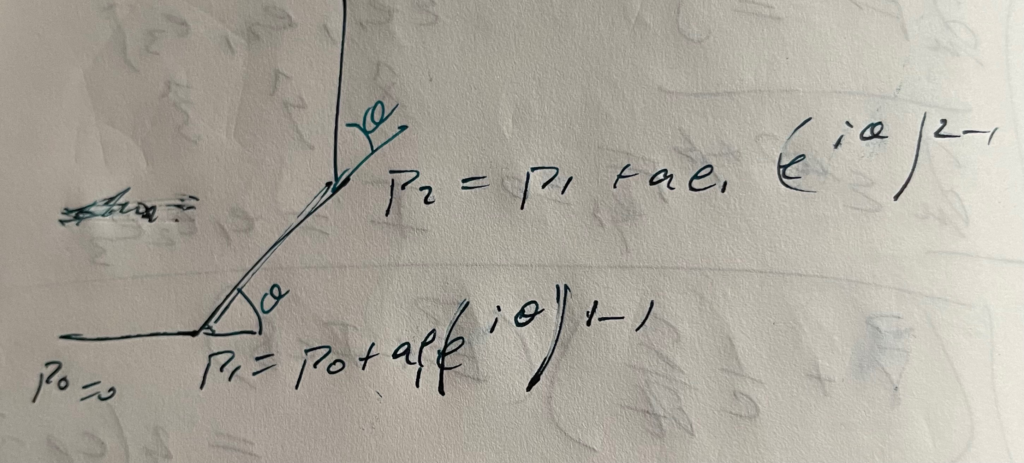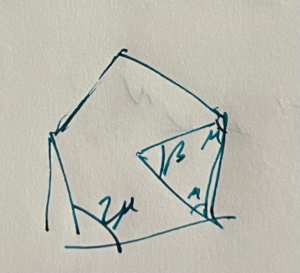[Click here for a PDF version of this post]
We found previously that a complex pair representation of a GA(2,0) multivector had a compact geometric product realization. Now that we know the answer, let’s work backwards from that representation to verify that everything matches our expectations.
We are representing a multivector of the form
\begin{equation}\label{eqn:bicomplexCl20:20}
M = a + b \Be_1 \Be_2 + x \Be_1 + y \Be_2,
\end{equation}
as the pair of complex numbers
\begin{equation}\label{eqn:bicomplexCl20:40}
M \sim \lr{ a + i b, x + i y }.
\end{equation}
Given a pair of multivectors with this complex representation
\begin{equation}\label{eqn:bicomplexCl20:60}
\begin{aligned}
M &= \lr{ z_1, z_2 } \\
N &= \lr{ q_1, q_2 },
\end{aligned}
\end{equation}
we found that our geometric product representation was
\begin{equation}\label{eqn:bicomplexCl20:80}
M N \sim
\lr{ z_1 q_1 + z_2^\conj q_2, z_2 q_1 + z_1^\conj q_2 }.
\end{equation}
Our task is now to verify that this is correct. Let’s set
\begin{equation}\label{eqn:bicomplexCl20:100}
\begin{aligned}
z_1 &= a + i b \\
q_1 &= a’ + i b’ \\
z_2 &= x + i y \\
q_2 &= x’ + i y’,
\end{aligned}
\end{equation}
and proceed with an expansion of the even grade components
\begin{equation}\label{eqn:bicomplexCl20:120}
\begin{aligned}
z_1 q_1 + z_2^\conj q_2
&=
\lr{ a + i b } \lr{ a’ + i b’ }
+
\lr{ x – i y } \lr{ x’ + i y’ } \\
&=
a a’ – b b’ + x x’ + y y’
+ i \lr{ b a’ + a b’ + x y’ – y x’ } \\
&=
x x’ + y y’ + i \lr{ x y’ – y x’ } + \quad a a’ – b b’ + i \lr{ b a’ + a b’ }.
\end{aligned}
\end{equation}
The first terms is clearly the geometric product of two vectors
\begin{equation}\label{eqn:bicomplexCl20:140}
\lr{ x \Be_1 + y \Be_2 } \lr{ x’ \Be_1 + y’ \Be_2 }
=
x x’ + y y’ + i \lr{ x y’ – y x’ },
\end{equation}
and we are able to verify that the second parts can be factored too
\begin{equation}\label{eqn:bicomplexCl20:160}
\lr{ a + b i } \lr{ a’ + b’ i }
=
a a’ – b b’ + i \lr{ b a’ + a b’ }.
\end{equation}
This leaves us with
\begin{equation}\label{eqn:bicomplexCl20:180}
\gpgrade{ M N }{0,2} = \gpgradeone{ M } \gpgradeone{ N } + \gpgrade{ M }{0,2} \gpgrade{ N }{0,2},
\end{equation}
as expected. This part of our representation checks out.
Now, let’s look at the vector component of our representation. First note that to convert from our complex representation of our vector \( z = x + i y \) to the standard basis representation of our vector, we need only multiply by \( \Be_1 \) on the left, for example:
\begin{equation}\label{eqn:bicomplexCl20:220}
\Be_1 \lr{ x + i y } = \Be_1 x + \Be_1 \Be_1 \Be_2 y = \Be_1 x + \Be_2 y.
\end{equation}
So, for the vector component of our assumed product representation, we have
\begin{equation}\label{eqn:bicomplexCl20:200}
\begin{aligned}
\Be_1 \lr{ z_2 q_1 + z_1^\conj q_2 }
&=
\Be_1 \lr{ x + i y } \lr{ a’ + i b’ }
+
\Be_1 \lr{ a – i b } \lr{ x’ + i y’ } \\
&=
\Be_1 \lr{ x + i y } \lr{ a’ + i b’ }
+
\lr{ a + i b } \Be_1 \lr{ x’ + i y’ } \\
&=
\gpgradeone{ M } \gpgrade{ N}{0,2}
+ \gpgrade{ M }{0,2} \gpgradeone{ N},
\end{aligned}
\end{equation}
as expected.
Our complex-pair realization of the geometric product checks out.


